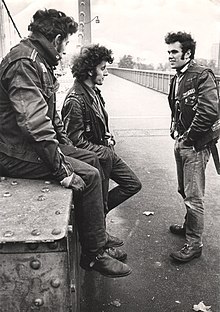A blog to document the progress of my Generic Fashion Module from Year 1 at Middlesex University.
Tuesday 14 December 2010
Subcultures: New Wave
The origin ...
The new wave as a whole is quite confused concept, because it is bound with too much tendencies and bands, which have only part of the new wave sound. As it may sound strange, Sex Pistols were the perpetrators who bring this trend in 1976. They do it as an alternative to our well-known punk. In fact the term was equivalent to the vanguard and stylish new French film new wave direction of the 60s. Over the years, however, many punk bands borrow from the new wave and thus in the course of time the new wave and the punk turn into interchangeable concepts. Interchangeable and yet different. The musicians, who follow after the garage band Sex Pistols are referred to as punk, but the works with which they declare themselves, is categorized as new wave. These groups include musicians who have become famous thanks to the pub rock scene in the middle of the 70s, as Patti Smith, Blondi, Elvis Costello. There are many musicians and bands, which are generally classified as punk, but they are characterized by the musical features of the new wave such as Ramones.
The new wave as a whole is quite confused concept, because it is bound with too much tendencies and bands, which have only part of the new wave sound. As it may sound strange, Sex Pistols were the perpetrators who bring this trend in 1976. They do it as an alternative to our well-known punk. In fact the term was equivalent to the vanguard and stylish new French film new wave direction of the 60s. Over the years, however, many punk bands borrow from the new wave and thus in the course of time the new wave and the punk turn into interchangeable concepts. Interchangeable and yet different. The musicians, who follow after the garage band Sex Pistols are referred to as punk, but the works with which they declare themselves, is categorized as new wave. These groups include musicians who have become famous thanks to the pub rock scene in the middle of the 70s, as Patti Smith, Blondi, Elvis Costello. There are many musicians and bands, which are generally classified as punk, but they are characterized by the musical features of the new wave such as Ramones.
Later the new wave transforms in direction, which is no longer the same noisy nature, but rather with more pop sound. Despite the difference between punk, new wave and post punk there is a common trend - a vigorous reaction against the general opinion of overproduction of the non-inspiring then pop music of the 70s.
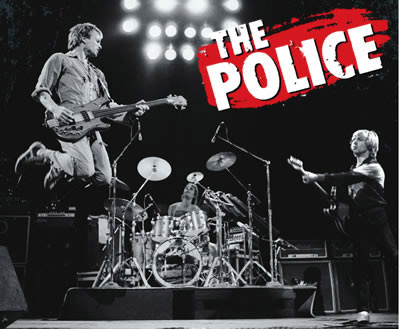
The new wave in USA ...
In USA, by new wave are identified numerous groups coming to the surface at the end of the 70s, already at the top of the musical wave between 1982 and 1983, when is the time of the second British invasion, and where gangs considered as new wave directly brake the charts. The musicians called new wavers at the end of the 70s as Joe Jackson, Elvis Costello, The Police, Gary Newman coincide perfectly with the characteristics of this tendency. Often times many of these bands avoid the label "new wave" and prefer to be called pop music.
In USA, by new wave are identified numerous groups coming to the surface at the end of the 70s, already at the top of the musical wave between 1982 and 1983, when is the time of the second British invasion, and where gangs considered as new wave directly brake the charts. The musicians called new wavers at the end of the 70s as Joe Jackson, Elvis Costello, The Police, Gary Newman coincide perfectly with the characteristics of this tendency. Often times many of these bands avoid the label "new wave" and prefer to be called pop music.
Started in 1980 and continued almost until 1988, the term new wave is used in America to describe almost every new pop rock or pop musician, who uses in his work mainly synthesizers. Examples of musicians, defined in the USA as new wave during this period, that don’t coincide with the original definition of the concept are Duran Duran, Depeche Mode, Eurythmics, Tears for Fears, Culture Club and others.
New wave fashion ...Because the term "new wave" today is too overexposed, it is difficult to be found the true new wave fashion. This is because of the simple reason that with the concept “new wave” are determined many fashion trends that directly reflect the today's fashion. And in this has nothing surprising. And of the true new wave fashion now people rarely speak. Yet here are the most characteristic features of this specific type of subculture direction.
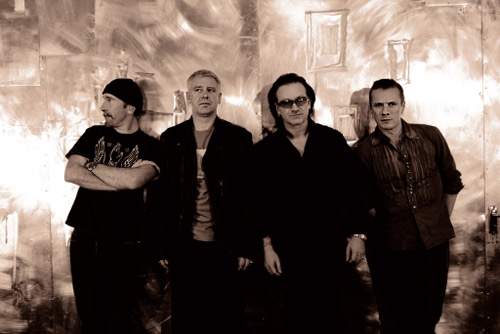
For the male new wave styling is particularly characteristic the eyeliner and the romantic stylized fashion, expressed in frivolous shirts. This kind of fashion is typical for bands called "new romancers" or "new wavers”.
The new wave often uses the fashion to express sexual orientation; however the make-up is not always a sign of trans or homosexuality, although some of the most famous musicians of that time as David Bowe, Boy George, and later George Michael claim particularly for homosexual orientation.
The new wave often uses the fashion to express sexual orientation; however the make-up is not always a sign of trans or homosexuality, although some of the most famous musicians of that time as David Bowe, Boy George, and later George Michael claim particularly for homosexual orientation.
The new wave fashion is a reaction of the hippie culture of the 60s. So flare and long-haired men are replaced with clothes on the body and short hair. The taken in the waist suits and narrow ties in style Blondi are an embodiment of the new wave style, which back in the time of the rock and roll and before the era of the hippies. Another aspect of the new wave culture is the striving to the use of modern synthetic materials such as protest and praise to the plastic materials. This requires the use of clothes with bright colors of the mass production, of cheap jewelry and accessories. As a fashion tendency the new wave is both post modern ideology as a continuation of the pop art.
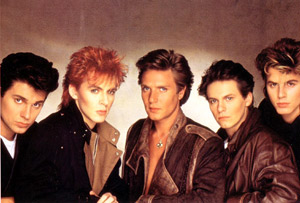
New wave and poetry ...
The new wave generation, victim of the political repressions during the 70s, inspired young people to begin to create. Although some of the leading figures of the time define their works as "confrontational”, actually the voice of their poetry is this of the man from the street, cautious, but at the same time filled with concern to the existing regime. The focus of their poetry is the language of the propaganda. Often the authors of such works written under the laws of the “linguistic poetry”, designed to ridicule the inadequacities of the newspaper style of writing, makes the audience to become a sensitive link - а result of the paralyzed effect of the official discourse. The authority looks at the new wave poets with a sense of concern and as a whole discomfit their plans to launch literary journal. Later in the years 1975-76, at the time of the changes in the Constitution and the employees' protests, is created a publishing underground network, the so-called "second circulation", where the new wavers play leading role.
The new wave generation, victim of the political repressions during the 70s, inspired young people to begin to create. Although some of the leading figures of the time define their works as "confrontational”, actually the voice of their poetry is this of the man from the street, cautious, but at the same time filled with concern to the existing regime. The focus of their poetry is the language of the propaganda. Often the authors of such works written under the laws of the “linguistic poetry”, designed to ridicule the inadequacities of the newspaper style of writing, makes the audience to become a sensitive link - а result of the paralyzed effect of the official discourse. The authority looks at the new wave poets with a sense of concern and as a whole discomfit their plans to launch literary journal. Later in the years 1975-76, at the time of the changes in the Constitution and the employees' protests, is created a publishing underground network, the so-called "second circulation", where the new wavers play leading role.
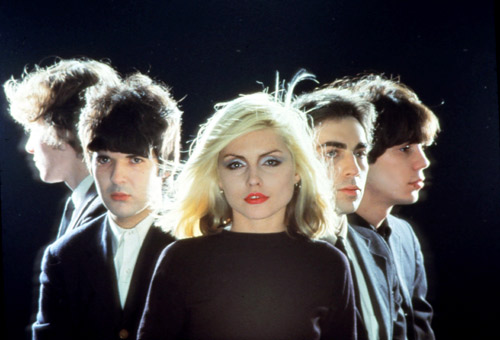
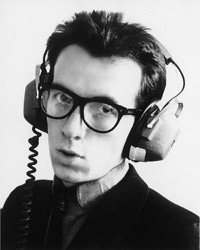 New wave initiatives...
New wave initiatives... The new wave often is compared with the popularity of the disco. But this is far from that. From that period remain significant for the development of music history musicians as Elvis Costello, Sting, U2. Thanks to the true professionalism of these performers, they continue to develop during the years and today. Furthermore, they manage to keep in their audience a spirit of constant civil responsibility. Bono of U2 is one of the leading celebrities who advocate to resolve conflicts without violence and to aid for the poor countries.
The new wave industry can’t close its eyes to the growing attention to the disease AIDS at the end of 80s. Unfortunately, the way of life of many new wave performers expressing strong through sexual activity and unsafe sex leads to loss of many new wave talents infected with HIV. Other direct the public attention to more awareness and raising of funds for research in the field of HIV and to support the nations destroyed by the growing number of HIV infected.
Nevertheless, during the years, the new wave modifies, but at least it is stored and manages to imply to the young generation that the only way to be truly happy and to be themselves, is to enjoy the favorite music and to believe in the ideas in which it believes ...
| New Wave | 90 up, 20 down | |
The longest-lived sub-genre of music. New Wave's roots can be traced back to 1969, when David Bowie first released the song "Space Oddity". In 1973, when Bowie re-released "Space Oddity", the precursor to New Wave, punk rock was born. Throughout the mid-1970's, Punk bands such as The Ramones, Siouxsie & the Banshees, the Sex Pistols and The Clash were discovered. During the disco backlash of 1979 and 1980, Punk rose to the forefront, while other bands like Blondie, Talking Heads, R.E.M., U2 and Devo began what would become the initial New Wave movement, which was capped off in 1981 when Billy Joel mentioned New Wave in the song "It's Still Rock & Roll to Me". During the early 1980's, there was a lot of band evolution taking place, as Bauhaus broke up, reformed as Tones on Tail, then reformed as Love and Rockets, while Mick Jones of The Clash formed Big Audio Dynamite, The Sex Gang Children split in half and became Culture Club, Vince Clarke, formerly of Depeche Mode, formed Yaz and then Erasure, and The English Beat split into bands such as Style Council, Modern English and Fine Young Cannibals. It was during this time, in 1983 and 1984 that New Wave grew to encompass such pop music acts as Madonna, Cyndi Lauper, David Bowie ((who created New Wave to begin with)), Duran Duran and even Huey Lewis & The News. In 1985, New Wave was at it's first peak, as bands such as Tears For Fears, U2, INXS, Berlin and Simple Minds were having hits songs everywhere. In 1986, however, New Wave encountered it's first lull, as hair bands, Genesis and Michael Jackson became hot. The next year, 1987, though, belonged to New Wave as Genesis hit on a New Wave staple: The war song. Bands such as R.E.M., Mike + The Mechanics, Big Audio Dynamite and Love & Rockets followed suit, all having hits dealing with the topic of World War 3. From 1988 to 1992, New Wave shared the spotlight with hair bands, until grunge killed both genres. In 1993, however, New Wave surprisingly resurfaced as Duran Duran, U2 and The Cure all had comeback hits. Throughout the 1990's and early 2000's, the stage was being set for a New Wave revival, which culminated in 2005 with the return of bands like New Order, Depeche Mode, Blondie, The New Cars, Duran Duran, U2, Queen and many others. There are too many examples of New Wave to list. Some of then are: Fusco (a fusing of funk and Disco that survived the Disco Backlash), New New Wave (The New Wave revival of 2006), the war songs of 1983 and 1987, Pop Wave (during the mid-80's when pop acts like Madonna, Prince and Cyndi Lauper were considered New Wave) and Punk Wave (the predecessor of New Wave, from 1978 to 1981). | ||
Subcultures: Hippy
hippie, also spelled hippy, ![Members of the Hog Farm commune celebrate the Fourth of July, 1968, aboard their bus, the …[Credit: © Lisa Law/The Image Works] Members of the Hog Farm commune celebrate the Fourth of July, 1968, aboard their bus, the …[Credit: © Lisa Law/The Image Works]](http://media-2.web.britannica.com/eb-media/24/77324-003-0E1312E1.gif) member, during the 1960s and 1970s, of a countercultural movement that rejected the mores of mainstream American life. The movement originated on college campuses in the United States, although it spread to other countries, including Canada and Britain. The name derived from “hip,” a term applied to the Beats of the 1950s, such as Allen Ginsbergand Jack Kerouac, who were generally considered to be the precursors of hippies. Although the movement arose in part as opposition to U.S. involvement in the Vietnam War (1955–75), hippies were often not directly engaged in politics, as opposed to their activist counterparts known as “Yippies” (Youth International Party).
member, during the 1960s and 1970s, of a countercultural movement that rejected the mores of mainstream American life. The movement originated on college campuses in the United States, although it spread to other countries, including Canada and Britain. The name derived from “hip,” a term applied to the Beats of the 1950s, such as Allen Ginsbergand Jack Kerouac, who were generally considered to be the precursors of hippies. Although the movement arose in part as opposition to U.S. involvement in the Vietnam War (1955–75), hippies were often not directly engaged in politics, as opposed to their activist counterparts known as “Yippies” (Youth International Party).
![Members of the Hog Farm commune celebrate the Fourth of July, 1968, aboard their bus, the …[Credit: © Lisa Law/The Image Works] Members of the Hog Farm commune celebrate the Fourth of July, 1968, aboard their bus, the …[Credit: © Lisa Law/The Image Works]](http://media-2.web.britannica.com/eb-media/24/77324-003-0E1312E1.gif) member, during the 1960s and 1970s, of a countercultural movement that rejected the mores of mainstream American life. The movement originated on college campuses in the United States, although it spread to other countries, including Canada and Britain. The name derived from “hip,” a term applied to the Beats of the 1950s, such as Allen Ginsbergand Jack Kerouac, who were generally considered to be the precursors of hippies. Although the movement arose in part as opposition to U.S. involvement in the Vietnam War (1955–75), hippies were often not directly engaged in politics, as opposed to their activist counterparts known as “Yippies” (Youth International Party).
member, during the 1960s and 1970s, of a countercultural movement that rejected the mores of mainstream American life. The movement originated on college campuses in the United States, although it spread to other countries, including Canada and Britain. The name derived from “hip,” a term applied to the Beats of the 1950s, such as Allen Ginsbergand Jack Kerouac, who were generally considered to be the precursors of hippies. Although the movement arose in part as opposition to U.S. involvement in the Vietnam War (1955–75), hippies were often not directly engaged in politics, as opposed to their activist counterparts known as “Yippies” (Youth International Party).Hippies felt alienated from middle-class society, which they saw as dominated by materialism and repression, and they developed their own distinctive lifestyle. They favoured long hair and casual, often unconventional, dress, sometimes in “psychedelic” colours. Many males grew beards, and both men and women wore sandals and beads. Long, flowing granny dresses were popular with women, and rimless granny glasses with both men and women. Hippies commonly took up communal or cooperative living arrangements, and they often adopted vegetarian diets based on unprocessed foods and practiced holistic medicine. For many The Whole Earth Catalog, which first appeared in 1968, became a source for the necessities of life. Hippies tended to be dropouts from society, forgoing regular jobs and careers, although some developed small businesses that catered to other hippies.
Hippies advocated nonviolence and love, a popular phrase being “Make love, not war,” for which they were sometimes called “flower children.” They promoted openness and tolerance as alternatives to the restrictions and regimentation they saw in middle-class society. Hippies often practiced open sexual relationships and lived in various types of family groups. They commonly sought spiritual guidance from sources outside the Judeo-Christian tradition, particularly Buddhism and other Eastern religions, and sometimes in various combinations. Astrology was popular, and the period was often referred to as the Age of Aquarius. Hippies promoted the recreational use of hallucinogenic drugs, particularly marijuana and LSD (lysergic acid diethylamide), in so-called head trips, justifying the practice as a way of expanding consciousness.
Both folk and rock music were an integral part of hippie culture. Singers such as Bob Dylan and Joan Baez and groups such as the Beatles, Grateful Dead, Jefferson Airplane, and Rolling Stones were among those most closely identified with the movement. The musical Hair, a celebration of the hippie lifestyle, opened on Broadway in 1968, and the film Easy Rider, which reflected hippie values and aesthetics, appeared in 1969. The novelist Ken Kesey was one of the best-known literary spokesmen for the movement, but he became equally famous for the bus tours he made with a group called the Merry Pranksters.
Public gatherings—part music festivals, sometimes protests, often simply excuses for celebrations of life—were an important part of the hippie movement. The first “be-in,” called the Gathering of the Tribes, was held in San Francisco in 1967. A three-day music festival known as Woodstock, held in rural New York state in 1969, drew an estimated 400,000–500,000 people and became virtually synonymous with the movement.
Hippies participated in a number of teach-ins at colleges and universities in which opposition to the Vietnam War was explained, and they took part in antiwar protests and marches. They joined other protestors in the “moratorium”—a nationwide demonstration—against the war in 1969. They were involved in the development of the environmental movement. The first Earth Day was held in 1970.
By the mid-1970s the movement had waned, and by the 1980s hippies had given way to a new generation of young people who were intent on making careers for themselves in business and who came to be known asyuppies (young urban professionals). Nonetheless, hippies continued to have an influence on the wider culture, seen, for example, in more relaxed attitudes toward sex, in the new concern for the environment, and in a widespread lessening of formality.
hippies | ||
1. A youth subculture from the late 1960's. The hippie subculture embraced drug use, political activism, communal living (not necessarily socialism) and generally clean living. Hippies wore patched, baggy clothing, beads and headbands. The men grew their hair long, and sometimes grew beards, and the women didn't wear bras, as they saw the undergarment as an attempt by men to determine how women were shaped. 2. A modern subculture resembling the hippies of the 60's, but without the political activism or the philosophical edge. Both the men and the women wear their hair in dreadlocks, and wear tie dye t-shirts and baggy corduroys with rows of patches up the sides. Modern hippies listen to groups such as Phish, the Greatful Dead and the String Cheese Incident, and hold a mythological reverence for the state of Vermont. | ||
Subcultures: Goth
The goth subculture is a contemporary subculture found in many countries. It began in England during the early 1980s in the gothic rock scene, an offshoot of the Post-punk genre. The goth subculture has survived much longer than others of the same era, and has continued to diversify. Its imagery and cultural proclivities indicate influences from the 19th century Gothic literature along with horror films and to a lesser extent the BDSM culture.[1][2][3]
The goth subculture has associated tastes in music, aesthetics, and fashion. Gothic music encompasses a number of different styles including Gothic rock,Darkwave, Ethereal, Neo-Medieval and Neoclassical. Styles of dress within the subculture range from deathrock, punk, androgynous, Victorian, someRenaissance and Medieval style attire, or combinations of the above, most often with dark attire, makeup and hair.
Ideology
Defining an explicit ideology for the gothic subculture is difficult for several reasons. First is the overwhelming importance of mood and aesthetic for those involved. This is, in part, inspired by romanticism and neoromanticism. The allure for goths of dark, mysterious, and morbid imagery and mood lies in the same tradition of Romanticism's gothic novel. During the late 18th and 19th century, feelings of horror and supernatural dread were widespread motifs in popular literature; the process continues in the modern horror film. Balancing this emphasis on mood and aesthetics, another central element of the gothic is a deliberate sense of camp theatricality and self-dramatization, present both in gothic literature as well as in the gothic subculture itself.
Goths, in terms of their membership in the subculture, are usually not supportive of violence, but are tolerant of alternative lifestyles that incorporate themes such as BDSM—always involving consent. Many in the media[who?] have incorrectly associated the Goth subculture with violence, hatred of minorities, and other acts of hate. However, violence and hate do not form elements of goth ideology; rather, the ideology is formed in part by recognition, identification, and grief over societal and personal evils that the mainstream culture wishes to ignore or forget. These are the prevalent themes in goth music.[10]
The second impediment to explicitly defining a gothic ideology is goth's generally apolitical nature. While individual defiance of social norms was socially risky in the 19th century, today it is far less socially radical. Thus, the significance of goth's subcultural rebellion is limited, and it draws on imagery at the heart of Western culture. Unlike the hippie or punk movements, the goth subculture has no pronounced political messages or cries for social activism. The subculture is marked by its emphasis on individualism, tolerance for diversity, a strong emphasis on creativity, tendency toward intellectualism, and a mild tendency towards cynicism, but even these ideas are not universal to all goths. Goth ideology is based far more on aesthetics and simplified ethics than politics.
Unlike punk, there are few clashes between political affiliation and being "goth". Similarly, there is no common religious tie that binds together the goth movement, though spiritual, supernatural, and religious imagery has played a part in gothic fashion, song lyrics and visual art. In particular, aesthetic elements from Catholicism often appear in goth culture. Reasons for donning such imagery range from expression of religious affiliation to satire or simply decorative effect. Regardless, there is a general tolerance for religious beliefs, and everyone including strict Catholics, atheists, and polytheists are accepted.[10]
While involvement with the subculture can be fulfilling, it also can be risky depending on where the goth lives, especially for the young, because of the negative attention it can attract due to public misconceptions of goth subculture. The value that young people find in the movement is evinced by its continuing existence after other subcultures of the eighties (such as the New Romantics) have died out.
[edit]Fashion
Main article: Gothic fashion
Goth fashion is stereotyped as a dark, sometimes morbid, eroticized fashion and style of dress. Typical gothic fashion includes dyed black hair, dark eyeliner, black fingernails, black period-styled clothing; goths may or may not have piercings. Styles are often borrowed from the Elizabethan, Victorian or medieval period and often express pagan, occult or other religious imagery such as pentacles or ankhs.[10][11] The extent to which goths hold to this style varies amongst individuals as well as geographical locality, though virtually all Goths wear some of these elements. Fashion designers, such as Alexander McQueen and John Galliano, have also been described as practicing "Haute Goth".[3] Goth fashion is often confused with heavy metal fashion:[12] outsiders often mistake fans of heavy metal for goth, particularly those who wear black trench coats or wear "corpse paint" (a term associated with the black metal music scene).
Subcultures: Rocker
Rockers, leather boys[1] or ton-up boys[2][3] are a biker subculture that originated in the United Kingdom during the 1950s. It was mainly centered around British cafe racer motorcycles and rock and roll music.
British mods and skinheads commonly called rockers greasers or grease as an insult. Since then, the terms greaser and rocker have become fairly interchangeable in the UK but are used differently in North America. Rockers were also derisively known as Coffee Bar Cowboys.[4] In Japan, their equivalent was called the Kaminari-zoku (Thunder Tribe).[5]
Origins
Until the post-World War II years, motorcycling held a prestigious position within British society and enjoyed a positive image, being associated with wealth and glamour. Starting in the 1950s, the middle classes were able to buy inexpensive motorcars, and motorcycles became transport for the poor.[6] The rocker subculture came about due to factors such as: the end of post-war rationing in the UK, a general rise in prosperity for working class youths, the recent availability of credit and financing for young people, the influence of American popular music and films such as The Wild One, the construction of race track-like arterial ring roads around British cities, and the development of transport cafes. These factors coincided with a peak in British motorcycle engineering.
Rocker-style youths existed in the 1950s,[7] and were also known as ton-up boys because ton-up was English slang for driving at a speed of 100 mph (160 km/h) or over. The Teddy boys of the 1950s are considered their "spiritual ancestors".[7] The rockers or ton-up boys took what was essentially a sport and turned it into a lifestyle, dropping out of mainstream society[8] and "rebelling at the points where their will crossed society's".[9] It had a damaging effect on the public image of motorcycling in the UK, and led to the politicisation of the motorcycling community.[6]
Around this time, the emerging mass media started targeting what were socially powerless groups who could not resist negative imagery, and cast them as "folk devils", creating a moral panic[10] through highly exaggerated and ill-founded portrayals.[11][12] From the 1960s on, due to the media fury surrounding themods and rockers, motorcycling youths became more commonly known as rockers, a term previously little known outside of small groups.[13] The public came to consider rockers as hopelessly naive, loutish, scruffy, motorized cowboys, loners or outsiders.[13]
Rockers immersed themselves in rock and roll music and fashions, and began to be known as much for their devotion to the music as they were for their motorcycles. Many rockers favored 1950s and early-1960s rock and roll by artists such as Gene Vincent, Eddie Cochran, Chuck Berry, Bo Diddley and Elvis Presley; music that George Melly called at the time, "screw and smash" music.[12]
Two groups emerged, one identifying with Marlon Brando's image in The Wild One and with the Hells Angels,[7][12] hanging around transport cafes, projecting nomadic romanticism, violence, anti-authoritarianism and anti-domesticity; the other being non-riders, similar in image but less involved in the cult of the motorbike.[12]
Characteristics
Rockers bought standard factory-made motorcycles and stripped them down, tuning them up and modifying them to appear like racing bikes. Their bikes were not merely transport, but were used as an object of intimidation and masculinity projecting them uneasily close to death,[12] an element exaggerated by their use of skull and crossbone-type symbolism. They raced on public roads and hung out at transport cafes such as The Ace Cafe, Chelsea Bridge tea stall, Ace of Spades, Busy Bee and Johnsons.[13] Hence the term cafe racer, (pronounced caff racer).
First seen in the United States and then England,[13] the rocker fashion style was born out of necessity and practicality. Rockers wore heavily-decorated leather motorcycle jackets, often adorned with metal studs, patches, pin badges and sometimes an Esso gas man trinket. When they rode their motorcycles, they usually wore no helmet, or wore a classic open-face helmet, aviator goggles and a white silk scarf (to protect them from the elements). Other common items included: T-shirts, leather caps, Levi's or Wrangler jeans,[20] leather trousers, tall motorcycle boots (often made by Lewis Leathers) or brothel creepers. Also popular was a patch declaring membership of the 59 Club of England, a church-based youth organization that later formed into a motorcycle club with members all over the world. The rocker hairstyle, kept in place with Brylcreem, was usually a tame or exaggerated pompadour hairstyle, as was popular with some 1950s rock and roll musicians.
Largely due to their clothing styles and dirtiness, the rockers were not widely welcomed by venues such as pubs and dance halls. Rockers also transformed rock and roll dancing into a more violent, individualistic form beyond the control of dance hall management.[12] They were generally reviled by the British motorcycle industry and general enthusiasts as being as an embarrassment and bad for the industry and the sport.[21]
Originally, many rockers opposed recreational drug use, and according to Johnny Stuart,
They had no knowledge of the different sorts of drugs. To them amphetamines, cannabis, heroin were all drugs - something to be hated. Their ritual hatred of Mods and other sub-cultures was based in part on the fact that these people were believed to take drugs and were therefore regarded as sissies. Their dislike of anyone connected with drugs was intense.
Cultural legacy
The rockers' look and attitude influenced pop groups from The Beatles in 1960 [7] to punk rock bands and their fans in the late 1970s. The look of the ton-up boy and rocker was accurately portrayed in the 1964 film The Leather Boys, starring Rita Tushingham and Directed by Sidney Furie. After 2000, the rocker subculture became an influence on the rockabilly revival and psychobilly scenes. The modern-day rocker-style and reunion motorcycle runs have followings all over the world, especially in Japan, the United States and Australia.
In the 2000s, many rockers still wear engineer boots or full-length motorcycle boots, but Winklepickers (sharp pointed shoes) are no longer common. Some rockers in the 2000s wear Dr. Martens boots, brothel creepers (originally worn by Teddy Boys) or military combat boots. Rockers have continued to wear motorcycle jackets, leather trousers and white silk scarves while riding their bikes. Leather caps adorned with metal studs and chains, common among rockers in the 1950s and 1960s, are rarely seen any more. Instead, some contemporary rockers wear a classic wool English driving cap.
Subscribe to:
Posts (Atom)


